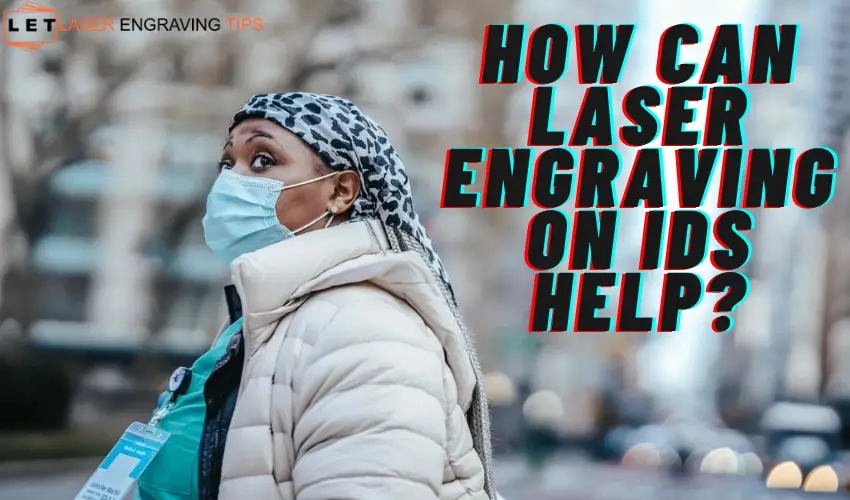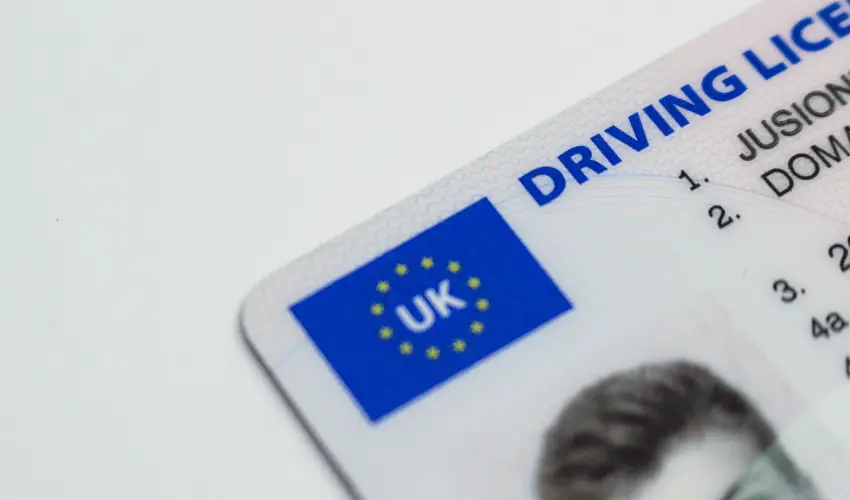Laser engraving has become an essential technology in creating secure, durable, and high-quality identification (ID) cards. From government-issued IDs to employee badges and membership cards, laser engraving enhances security, longevity, and clarity.

Table of Contents
This article explores the benefits, applications, and effectiveness of laser engraving on ids.
What is Laser Engraving on IDs?
Laser engraving is a precise process that uses a high-powered laser to etch text, images, and other details onto a surface. Unlike traditional printing methods, which rely on ink or thermal transfer, laser engraving physically alters the material, creating a permanent mark that cannot be easily removed or tampered with.
Reasons why laser engraving on IDs helps
1. Laser Engraving Could Eradicate Fake IDs
While more basic ID cards are not necessarily hard to replicate, there are numerous ways to use laser engraving to upgrade a company’s ID cards’ security with features like changeable laser images, variable micro text, laser protected images, invisible personal information, ghost images, tactile effects, and more. Let’s take a look at how some of these features enhance security.
- First, changeable laser images and multiple laser images both allow for different images to be viewed depending on the angle the card is viewed from. The almost holographic-like effect adds an extra feature that those attempting to counterfeit an ID card would have to take into account.
- Some features like variable micro text and invisible personal information allow for hidden data within images for which special tools are needed to verify what is written for an added layer of security.
- Ghost images are smaller, grayscale images that are a copy of the color images also included on the card, and are often semi-translucent, which is yet another effect that anyone attempting to fake the card must reproduce.
- Tactile effects may include a raised area which can be felt by anyone as an aspect of authenticity, as these are hard to produce. This also may even include the production of braille letters, which is a benefit for those companies where there are workers who may be vision impaired; they would still be able to check the identity of those with an ID with this feature.
- Laser-protected images are used to extend the lifespan of the card – if the color photo becomes worn over the years by temperature and humidity as well as use, this deeper level engraving will still show a detailed image of the person in grayscale, and this further prevents manipulation attempts.
2. Tamper-proof security features
3. Custom Medical ID Alert Bracelets & Necklaces
Useful for those with conditions that could require specific, immediate attention in an emergency situation, people with diabetes, heart disease, epilepsy, Alzheimer’s, food or drug allergies, or on certain medications would do well to wear a medical ID alert bracelet or necklaces.
First responders would be able to instantly recognize these conditions exist and treat the person accordingly. Laser engravings are clean, deep, and high-contrast, standing up to any fluids that could affect other identification forms and even just wear and tear from rubbing against the body or clothing.
4. Fraud protection
Due to polycarbonate items’ multiple fused layers, it is almost impossible to alter the laser engraved identification information, thereby ensuring that no one could turn a legitimate ID into a fake one.
This also limits the manufacturing of new identification cards and documents, as they can be made only by those who have the technology to do so. This makes laser engraved ID cards highly desirable and the manufacturing of these cards is a lucrative market.
5. Safe screening of employees
From the micro text that is readable with a loupe or magnifying glass to subsurface laser engravings, changeable laser images and multiple laser images, ghost images, and tactile effects like raised areas that can be felt with the fingers, the possibilities of making a highly unique card for a company are nearly endless.
With multiple features involving laser engravings featured on such an ID card, this would allow those who are screening employees to ensure only legitimate employees with their IDs are granted entrance to a building or secure area.
Laser engraving provides a multitude of options for creating unique ID card features that ensure the authenticity of a card. For companies with high stakes such as those with secure areas dealing with medicine, proprietary information and technology, and banking, obtaining extra security measures is a necessity and laser engraving is a great solution for this problem.
Applications of Laser Engraving on IDs

1. Government-Issued Identification
Many national ID programs, passports, and driver’s licenses use laser engraving due to its superior security features and longevity.
2. Employee and Access Control Badges
Organizations use laser-engraved employee ID cards and access control badges to enhance workplace security and prevent unauthorized access.
3. Membership and Loyalty Cards
High-end membership and loyalty programs use laser engraving to create premium, tamper-proof cards for their members.
4. Student and University IDs
Educational institutions issue laser-engraved student IDs to prevent counterfeiting and ensure long-lasting identification for students and staff.
Laser personalization for high security ID cards
Laser-based card personalization involves engraving rather than printing, making the cards highly tamper-resistant. Polycarbonate (PC) is the preferred material for laser-engraved ID cards, offering durability, security features like Changeable Laser Images (CLI), and resistance to extreme temperatures.
Laser engraving enables advanced security measures, including microtext, grayscale images, hidden personal information, tactile effects, and ghost images. These features make forgery and tampering extremely difficult. Additionally, laser engraving is now being used for metal cards, particularly in the financial sector.
Matica Technologies is a leading provider of laser-based card issuance solutions, offering a range of high-security options for ID cards, financial cards, and passports.
Frequently Asked Questions
How Does Laser Engraving for Security Work?
Laser engraving for security provides a plethora of options for companies to choose from. The engravings are made on polycarbonate cards which have fused layers that are nearly impossible to tamper with – usually the evidence is highly visible if an attempt to do so is made.
Where is Laser Engraving Being Used for Security?
Laser engraving is being used by governments such as Uruguay (which has joined an ever-growing list of countries using this technology for driver’s licenses) to create identification cards and documents.
Subsequently, many businesses have caught on that laser engraving would allow for higher security for ID badges. High-end credit card companies are even using this technology to create metal credit cards, although many prefer the advantages of polycarbonate.
Why polycarbonate for IDs?
Polycarbonate cards and documents are made of multiple fused layers, making it almost impossible to alter the laser engraved identification information, thereby ensuring that no one could turn a legitimate ID into a fake one by adding different details or altering any information already present.
Why are cards with laser-based issuance systems more secure?
The act of laser engraving on polycarbonate cards makes it virtually impossible to alter the engraved photos and text making up the identification information; any further engravings would not be able to easily hide the markings already present, and there is no way to remove anything already present like you may be able to do with ink on a surface layer.
Final Thoughts
Laser engraving on IDs offers numerous advantages, including enhanced security, durability, and precision. Whether for government, corporate, or institutional use, this technology provides a reliable solution for creating high-quality and tamper-proof identification cards. As security needs continue to evolve, laser-engraved IDs remain one of the most effective ways to protect identities and prevent fraud
